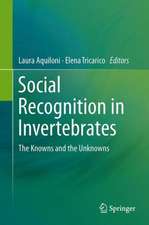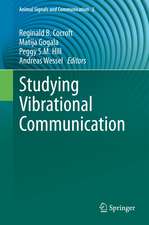The Fear of Snakes: Evolutionary and Psychobiological Perspectives on Our Innate Fear: The Science of the Mind
Autor Nobuyuki Kawaien Limba Engleză Paperback – 28 sep 2020
The first half of the book discusses the history of psychological behaviorism and neobehaviorism. The latter half of the book consists mainly of the experimental studies performed by the author with a focus on three key items: First, compared with other animals, snakes especially draw the attention of primates and humans. Second, the ability of primates and humans to recognize snakes with particular efficiency. Third, processing mechanisms within the brain for snake detection is discussed from a new viewpoint.
The book offers a unique resource for all primatologists, psychologists, neuroscientists, anthropologists, herpetologists, and biologists who are interested in the evolution of visual and cognitive systems, mechanisms of fear, snakes or primates.
| Toate formatele și edițiile | Preț | Express |
|---|---|---|
| Paperback (1) | 551.69 lei 39-44 zile | |
| Springer Nature Singapore – 28 sep 2020 | 551.69 lei 39-44 zile | |
| Hardback (1) | 560.01 lei 39-44 zile | |
| Springer Nature Singapore – 27 sep 2019 | 560.01 lei 39-44 zile |
Preț: 551.69 lei
Preț vechi: 689.61 lei
-20% Nou
Puncte Express: 828
Preț estimativ în valută:
105.57€ • 112.89$ • 88.02£
105.57€ • 112.89$ • 88.02£
Carte tipărită la comandă
Livrare economică 14-19 aprilie
Preluare comenzi: 021 569.72.76
Specificații
ISBN-13: 9789811375323
ISBN-10: 9811375321
Pagini: 187
Ilustrații: XIV, 187 p. 57 illus., 12 illus. in color.
Dimensiuni: 155 x 235 mm
Ediția:1st ed. 2019
Editura: Springer Nature Singapore
Colecția Springer
Seria The Science of the Mind
Locul publicării:Singapore, Singapore
ISBN-10: 9811375321
Pagini: 187
Ilustrații: XIV, 187 p. 57 illus., 12 illus. in color.
Dimensiuni: 155 x 235 mm
Ediția:1st ed. 2019
Editura: Springer Nature Singapore
Colecția Springer
Seria The Science of the Mind
Locul publicării:Singapore, Singapore
Cuprins
Historical transition of psychological theories of fear: The view of fear in Behaviorism.- Are snakes special in human fear learning and cognition?: The preparedness theory of phobia and the fear module theory.- The Underlying Neuronal Circuits of Fear Learning and the Snake Detection Theory (SDT).- Ontogeny and phylogeny of snake fear.- Do snakes draw attention more strongly than spiders or other animals?.- Other types of studies showing that snakes hold special status in threat perception.- Searching for the critical features of snakes.- Issues that remain unanswered.
Notă biografică
Nobuyuki Kawai
Professor of Department of Cognitive and Psychological Sciences
Nagoya University
Nagoya, Japan
Professor of Department of Cognitive and Psychological Sciences
Nagoya University
Nagoya, Japan
Textul de pe ultima copertă
This book provides a series of compelling evidence that shows that humans have innate fear of snakes. Building on the previous studies on the Snake Detection Theory (SDT), the author presents a summary of psychological and neuropsychological experiments to explain the fear of snakes in humans and primates. Readers will come to understand why and how we are afraid of snakes from an evolutionary perspective.
The first half of the book discusses the history of psychological behaviorism and neobehaviorism. The latter half of the book consists mainly of the experimental studies performed by the author with a focus on three key items: First, compared with other animals, snakes especially draw the attention of primates and humans. Second, the ability of primates and humans to recognize snakes with particular efficiency. Third, processing mechanisms within the brain for snake detection is discussed from a new viewpoint
The book offers a unique resource for all primatologists, psychologists, neuroscientists, anthropologists, herpetologists, and biologists who are interested in the evolution of visual and cognitive systems, mechanisms of fear, snakes or primates.
The first half of the book discusses the history of psychological behaviorism and neobehaviorism. The latter half of the book consists mainly of the experimental studies performed by the author with a focus on three key items: First, compared with other animals, snakes especially draw the attention of primates and humans. Second, the ability of primates and humans to recognize snakes with particular efficiency. Third, processing mechanisms within the brain for snake detection is discussed from a new viewpoint
The book offers a unique resource for all primatologists, psychologists, neuroscientists, anthropologists, herpetologists, and biologists who are interested in the evolution of visual and cognitive systems, mechanisms of fear, snakes or primates.
Caracteristici
Presents a series of experiments that confirm our innate fear of snakes, and explains the evolutionary cause of that fear Uses various approaches including comparative, developmental, and electro-physiological experiments Describes the neural mechanism involved in detecting snakes quickly Readers will learn how to use multiple techniques, indices, and tasks including EEGs, visual search tasks, the RISE technique, and infant looking time

























